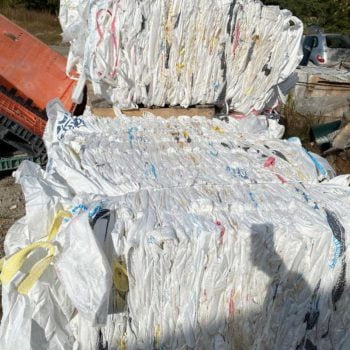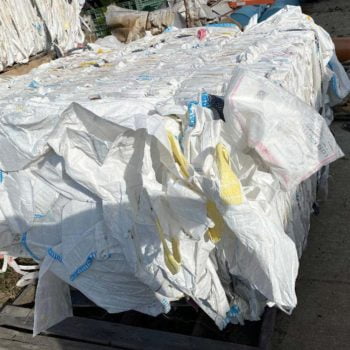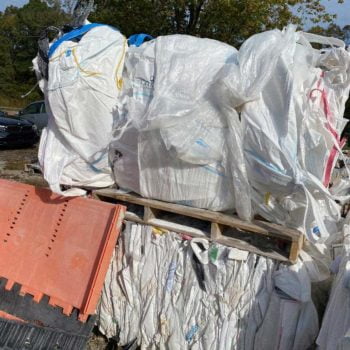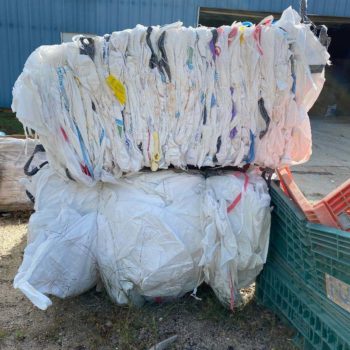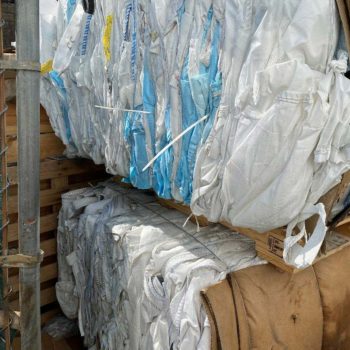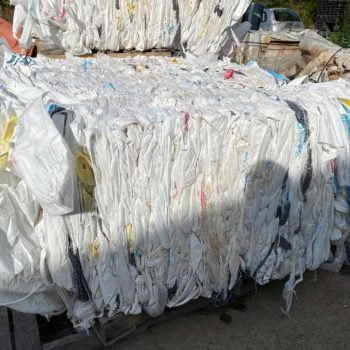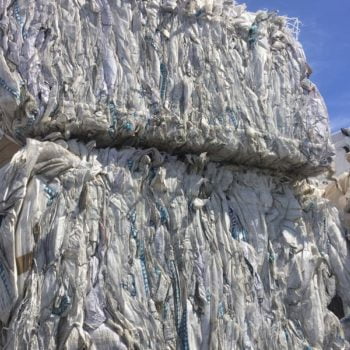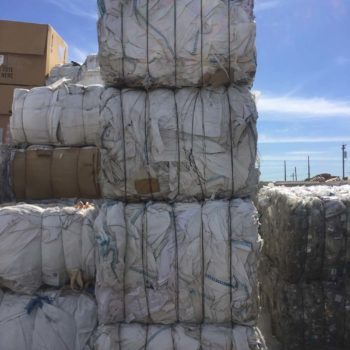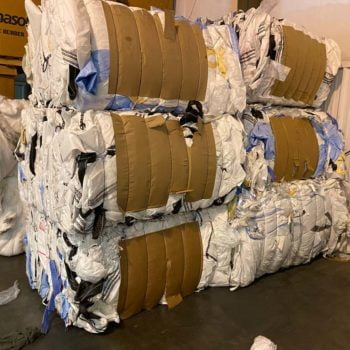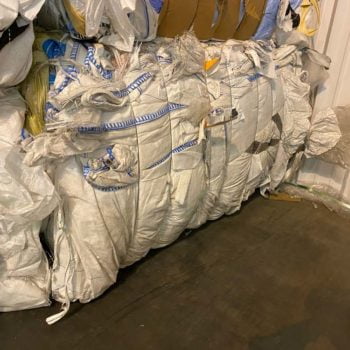The Ultimate Guide to Super Sacks
Super sacks, also known as flexible intermediate bulk containers (FIBCs), are large woven bags that have become a popular solution for the storage and transportation of bulk materials. They are widely used in industries such as agriculture, mining, and manufacturing, and are known for their efficiency and durability. However, proper disposal and The Bulk Bag Recycling Process of super sacks is critical to minimize waste and protect the environment. In this article, we will take a closer look at super sacks and their importance in the world of material handling.
Understanding Super Sacks: Key Features and Benefits
Super sacks are made from polypropylene, a strong and non-biodegradable material. This makes them a suitable choice for the storage and transportation of heavy materials, as they can handle substantial weight and withstand rough handling. They also come in a variety of sizes and colors, allowing for customization to meet specific needs.
In addition to their practical benefits, super sacks offer several environmental advantages. They take up less space than traditional containers, reducing the amount of transportation needed and minimizing the carbon footprint. Moreover, by choosing to work with reputable super sack suppliers, organizations can ensure that the bags are produced using environmentally responsible methods.
PP Super sacks: Safely Reusing and Upcycling Bulk Bags
When bulk bags reach the end of their life cycle, it is important to determine if they can be safely reused. To determine this, a series of inspections must be conducted to ensure that the bags are in good condition and meet safety standards. A comprehensive download can be found here.
-
Inspection of Bulk Bags
- The first step in the process is to inspect the bulk bags. The size and configuration of the bag is noted along with the previous content and if it can be harmful to employees. This should also include checking for any signs of damage or wear, such as holes, tears, or frayed edges.
-
Checking For Damages And Wear
- It is important to thoroughly examine each bulk bag for signs of damage and wear. Any bags that show signs of damage or wear should be redirected to recycling.
-
Quality Control
- Rejection of bags not meeting safety standards. If the bulk bags do not meet safety standards, they should be rejected and not used for future transport or storage of bulk materials. Super Sacks that previously contained hazardous chemicals cannot be reused – only food grade bags.
-
Cleaning
- Once the inspection has been completed, the bulk bags should be cleaned. This should include removing any residual matter from the bags and replacing the liner if necessary. It is also important to ensure that any statically held dust in the bags does not exceed four ounces.
-
Reconditioning
- After the bags have been cleaned, they should be reconditioned. This includes replacing web ties, labels, tickets, and cord-locks, as well as ensuring that the bags are kept in top-performing condition.
Alternative to Recycling Rejected Bags
If the bulk bags cannot be reused, they should not be simply thrown away. Instead, they can be upcycled, which provides a more sustainable solution.
Upcycling Bulk Bags
Upcycling is the process of converting waste materials into new products. This not only helps to reduce waste, but it also helps to reduce the demand for raw materials, saving natural resources. Upcycling bulk bags is a great way to extend their life cycle and reduce waste.
- Explanation of upcycling: Upcycling is a sustainable solution for bulk bags that can no longer be reused. It involves converting waste materials into new products, extending their life cycle and reducing waste.
- Examples of upcycling bulk bags: There are many creative and practical ways to upcycle bulk bags. Some examples include:
- Compost bags: Bulk bags can be used as compost bags, which allows for the safe and convenient storage of organic materials.
- Raised garden beds: Bulk bags can be filled with soil to create raised garden beds. This is an easy and cost-effective way to grow vegetables, flowers, and other plants.
- Weed suppression: Bulk bags can be used as weed suppression mats, which helps to prevent weeds from growing in garden beds and landscaped areas.
- Tarps: Bulk bags can be cut and sewn into tarps, which can be used for a variety of purposes, including covering outdoor furniture, protecting tools, and shading plants.
- Benefits of upcycling bulk bags: Upcycling bulk bags provides several benefits, including:
- Reducing waste: Upcycling helps to reduce waste by converting waste materials into new products.
- Reducing cost: Upcycling cuts down on the need to purchase new products
- Save Resources: Less new products means less resources are consumed
The Importance of Super Sack Recycling
Despite their numerous benefits, super sacks also pose a significant environmental challenge when it comes to disposal. If not properly recycled, they can take hundreds of years to decompose in landfills and pose a threat to marine life if they end up in the ocean.
Super sack recycling is critical in conserving natural resources, reducing greenhouse gas emissions, and minimizing waste in landfills. Recycling super sacks also creates a sustainable source of raw materials for the production of new products, reducing the need for virgin materials and contributing to a circular economy.
The Bulk Bag Recycling Process: A Step-by-Step Guide
Collection
At the start of the recycling journey, it’s crucial to gather the recyclable bulk bags. One of the most efficient and cost-effective ways of collecting the bags is through compacted bales. The bags must be sorted into three categories, namely Grade A, B, and C, based on their cleanliness and color. Grade A Sacs are immaculate and predominantly white with only colored stitching and handles. Grade B Sacs are somewhat dirty but still mostly white with some coloring. Grade C Sacs are excessively dirty or colorful.
Sorting and Cleaning
Given the wide range of industries and applications that bulk bags serve, it’s necessary to sort the bags into groups and clean them thoroughly based on their contents. The bags may hold everything from sand to hazardous chemicals, so proper cleaning is vital. During this stage, the recycling facility will also remove all zips and buttons.
Shredding
Once the bags have been cleaned and prepped, they move on to the shredder, which size reduces them to small flakes. This stage makes the subsequent processes easier to handle and is a key step in the recycling process.
Separation
The shredded material goes through a separation phase, where machines sort the plastic based on color, shape, size, light absorption, and melting point. They also eliminate any impurities or contaminants from the polymers. This is done through density separation and Infrared Sorting technology. The more pure and uniform the flake the cheaper the separation phase becomes.
Compounding
The final phase of the Super Sack recycling process is compounding, where the flake is melted into a finished product or reprocessed pellet. In this stage, extruders melt the shredded material at a temperature of approximately 240 degrees Celsius. The molten plastic is then forcing through a screen to further filter out any remaining impurities. Once absolutely clean and pure, the melted plastic is extruded into a strand, cooled and chopped, creating pellets or granules of the plastic. These pellets can be used in new products, such as clothing, playground equipment and packaging… even new PP Super Sacks. To enhance the pellet properties, recyclers sometimes add virgin resin, up to 50% of the blend, to strengthen the end result.
Challenges of PP Supersac Recycling and How to Overcome Them
Despite the many benefits they offer, the recycling of these bags presents several challenges that can be overcome with simple “best practices” of recycling.
Lack of Awareness
One of the biggest challenges facing PP Supersac recycling is the lack of awareness among users. Many people are unaware of the need to recycle these bags, or how to recycle them properly. This means that many bags end up in landfills, where they can harm the environment and wildlife. To overcome this challenge, education and awareness campaigns must be launched to educate the public about the benefits of recycling and the proper recycling process.
Limited Recycling Infrastructure
Another challenge facing the recycling of PP Supersacs is the limited recycling infrastructure. Not all communities have access to recycling facilities, and those that do may not accept these bags. To overcome this challenge, the industry must invest in new recycling technologies and establish more recycling facilities in communities where they are needed.
Contamination of Recyclable Materials
Contamination is a major challenge facing PP Supersac recycling. When bags are contaminated with other materials, they can’t be recycled and must be sent to landfills. To overcome this challenge, proper sorting and cleaning procedures must be established at recycling facilities to ensure that the bags are clean and free of contaminants before they are recycled.
Quality Control
Finally, quality control is a major challenge in the recycling of PP Supersacs. To ensure that the recycled material is of high quality, the recycling process must be carefully controlled. This includes proper sorting and cleaning, as well as monitoring the melting and compounding process to ensure that the final product meets the desired quality standards.
Working with Reliable Super Sack Suppliers
Working with reputable super sack suppliers is key to reducing waste and promoting sustainability. By choosing suppliers that prioritize environmentally responsible methods, organizations can ensure that their super sacks are produced in an eco-friendly manner and can be properly recycled when their useful life has ended.
How To Sell PP Super Sacks
PP Supersacs have value on the secondary market. Here’s a step-by-step guide on how to sell your PP Supersacs for the best price:
-
Sort and Clean
- Sort the PP Supersacs by color and clean them thoroughly to remove any residual content, such as food or chemical residue. This is an important step to ensure that the recycled material is of good quality. Remove dirty liners and discard of soiled supersacs.
-
Bale & Stage For Shipment
- Getting a shipment as heavy as possible will save money on freight and improve the value picked up at your dock. Use headers if making downstroke bales. Stage bales on pallets to maintain cleanliness.
-
Offer Material To Buyers
- Take pictures and send them to a plastic broker. Clearly show the staged material and how it will ship. Keep it clean, uniform and dry to get the best price for your scrap PP Bulk Bags.
-
Ship The Product
- Load the trailer or container with as many bales as possible. This may require turning some on their sides and squeezing them in to get 5 bales to a row instead of 3. This is important as it helps increase the weight and reduce the cost of transportation. Remember to count bales and take pictures at loading – one per row. Send over the paperwork and loading pics to your buyer promptly to get paid.
Conclusion
Super sacks are a versatile and efficient solution for material handling, but proper disposal and recycling is critical to minimize waste and protect the environment. There are many alternatives to landfilling PP Supersacs that are more environmentally friendly options to disposal, like reusing and recycling. The road from waste to raw material is not an easy one. By following the steps outlined in this guide and working with reliable super sack suppliers, individuals and organizations can make a positive impact on the environment while also reducing their waste disposal costs.

